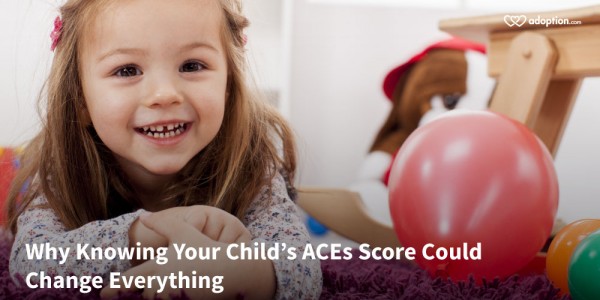I first heard the term “ACEs score” at a conference for service providers who work with at-risk children. I was there to support the director of our church’s preschool but I left with some new information that would later help me as a foster parent. The facilitator briefly touched on her difficult childhood and her serious health issues in adulthood. At the time, I didn’t understand the connection between the two, but I remember being interested in the potential applications of a score that could measure trauma in childhood.
Unfortunately, after the training I forgot about the term. It wasn’t until I was watching a Ted Talk on childhood trauma that I heard it again and learned that ACEs are Adverse Childhood Experiences. At the time, it had been nearly six months since we had welcomed children in foster care into our home. As foster parents, my husband and I had never once heard of an ACEs score or the ACEs study; not in our required training or the supplemental training on childhood trauma that we sought out on our own.
It wasn’t until after we had been through several extremely difficult months with our children and we experienced a failed adoption that I stumbled across the Adverse Childhood Experiences study. The study is one of the most in-depth examinations of the correlation between childhood trauma and outcomes later in life. For me, the most important result of the study is the score (a 1-10 scale) and how a simple assessment can give parents and child advocates invaluable foresight into the lives of children in their care.
The ongoing ACEs study began in 1995 and originally evaluated over 17,000 individuals, many of whom are still being observed today. The participants answered extensive questions on their childhoods and underwent full physical examinations. The resulting evidence has produced hundreds of published scientific papers and conference presentations. The massive endeavor was realized through the combined efforts of the Centers for Disease Control and the Kaiser Permanente, a health care consortium.
The study discovered that repeated toxic childhood stress affects a child’s brain so severely that it cannot develop properly. The resulting physiological changes in the body can lead to mental illness, chronic disease, and even early death. The effects of childhood trauma may not be seen until adulthood and are surprising. For instance, the study concluded that someone with four ACEs is three times more likely to have Chronic Obstructive Pulmonary Disease (COPD). A British report showed that women under 50 with two ACEs are twice as likely to have cancer than a woman with no ACEs. Another disturbing figure, shared by the founder of the ACEs study, Dr. Vincent Felitti, is that an individual with six ACEs is between 3,100 and 5,000 percent more likely to attempt suicide than someone who didn’t experience childhood trauma. Five thousand percent—that is a number we cannot ignore.
So what does this mean? The good news is that the medical community is taking note. In clinics, doctor’s offices, and even schools across the country, children and adults are being screened for ACEs to support their preventative and comprehensive healthcare. The bad news is that most of us outside of the medical community have never heard of the study. What was upsetting to me is that I was not informed of this helpful tool as a foster and pre-adoptive parent.
The first thing I did when I realized the significance of the score was to calculate the scores of our daughters who are in foster care. I expected one to be quite high but I anticipated the other to be mid-range (4-6). I was floored to discover that one of my daughter’s scores was a 10, while the other was at least an 8, and possibly a 10 (because I do not know her full history). This realization gave me a whole new perspective on the futures of our girls. While I had assumed that life would be difficult for them, I hadn’t considered all that that they would be up against. The odds are alarming for the following and more: teen pregnancy, IV drug use, rape, domestic violence, chronic diseases, mental health issues, and even cancer.
While it’s true that a person with six or more ACEs is likely to have a shortened life span by 20 years, a high ACEs score is not a death sentence or a guarantee of anything. In fact, ACEs are common in America. Two out of three of us have at least one and nine percent of us have all 10, which means that this affects every one of us either directly or indirectly. Children and adults who experienced trauma in childhood are in jeopardy of poor outcomes but through screening, prevention, and good healthcare, many of the negative influences can be reduced, if not eliminated entirely.
As an American, I hope to see ACEs screening become a standard of care in our medical and mental health communities. As a foster and pre-adoptive parent, I will advocate for training on ACEs and what it means for our children, our families, and our futures. Armed with the knowledge of the risk factors my girls face, I will fight for support and services to improve their odds and their quality of life as adults. While I am grateful for the statistics associated with my children’s scores, I know that our girls are so much more than numbers and that every person has the ability to overcome his or her obstacles given the opportunity and loving support to do so.
Resources:
Calculate Your Child’s ACEs Score
CDC Adverse Childhood Experiences Study
How Childhood Trauma Affects Health Across A Lifetime
The Lifelong Effects Of Trauma In Childhood
How Childhood Trauma Can Make You A Sick Adult

